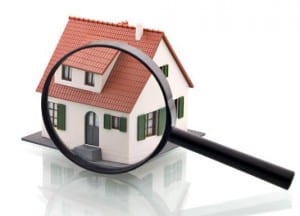
What is the difference between Freehold and Leasehold?
There are two ways in which a property in the UK can be registered, either with a Freehold Title or a Leasehold Title. These are two very different types ways to hold land and the fundamental difference is whether you will own the land outright or not.
Freehold Title
Where a property is registered with a Freehold Title, this means that the property will be owned by the most complete form of ownership. You will own both the building and the land that the building is built on and you will own them completely, without any time restrictions. When buying a property, a freehold property is usually the preferred option for most purchasers for the main reason that it is the whole of the title that will be owned and there will be no third parties involved.
Leasehold Title
A property registered with a Leasehold Title means that the owner of the property does not own the land and building, and in fact only has a temporary right to occupy the property. The property will be subject to a formal document known as a ‘Lease’ which although grants and exclusive right for the owner to occupy the property for a fixed term, e.g. 99, 125 or 999 years, it also contains a number of specific rights and restrictions that must be observed and performed during a person’s period of ownership.
If a person holds a Freehold interest in a property, then they have the option to grant a Leasehold interest to another person thereby creating a Landlord and Tenant relationship. As the owner of the Leasehold Title, you will be known as the ‘Tenant’ and as the owner of the Freehold title, they will be referred to as the Landlord. As a Tenant, you will not own the land that the property stands upon and so will be responsible to pay ground rent – essentially to rent the ground that your property is sat on.
Leasehold Titles in residential property
The most common time we see Leasehold Titles in conveyancing is when you are buying a flat or apartment. These will almost always be under a Leasehold Title.
The Length of a Lease can vary. Some are less than 100 years, but others can be for 999 years. If you are buying an existing flat (i.e. not a new build) then you will be taking an assignment of the lease, and therefore your lease is for a long as is left under the original lease. So if the flat was built in 1997 and had a 100 year lease in place, you would be buying a property with 80 years left to run. That isn’t likely to be much of a problem.
Mortgage lenders like there to be fifty (50) years left after the end of the term of the mortgage and so if you’re buying a particularly old flat or apartment (say for example one in a very old block of apartments in London Bristol etc) the length of term left is an important consideration.
Leases can be extended by agreement with the Landlord/Freeholder and there is usually a cost attached to this.
Leasehold titles are seen in apartments and flats as they also allow rules to be included in respect of shared spaces, such as entrance lobbies. It also also rights of access for repairing by the Freeholder and other rights and obligations necessary to keep things up to standard. It may be that the Lease imposes service charges, and sometimes these are paid to an Agent or Managing Company. If you are buying a leasehold property, you’ll want to know what charges are and ensure there are no arrears.
For more information on Freehold and Leasehold Titles when buying a Property, please do not hesitate to contact one of our conveyancing solicitors in Leicester.
[show-team category=’property-2′ layout=’grid’ style=’img-rounded,img-white-border,text-left,img-above,3-columns’ display=’photo,position,location,email,telephone,name’]
